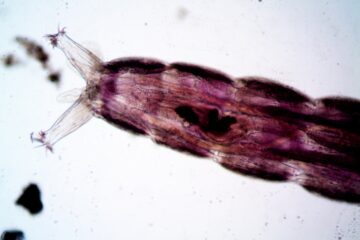![]()
Introduction
Over time, forensic evidence has grown in breadth and significance. On the one hand, as technology has advanced, new kinds of crime have developed as a significant problem for law enforcement. Examples include internet-based crime and computer-assisted crime. As a result, forensic science has grown to include new disciplines like computer forensics. On the other hand, forensic evidence is becoming more and more in demand and used by judges and other decision-makers. Courts have recently relied more on forensic evidence than oral testimony to support convictions. In order to satisfy the courts and other stakeholders, such as the government, investigative agencies are required to not only gather newer sorts of evidence but also work to get pertinent and persuasive forensic evidence.
With its multidisciplinary approach, forensic science entails putting several scientific fields’ theories and methods to use in legal situations.
Trace Evidence Analysis
The foundation of all forensic science as we know it today, Locard’s concept of exchange, is the key to the existence of trace evidence. It is difficult for a criminal to act, especially given the severity of a crime, without leaving signs of this presence, according to Sir Edmond Locard[1]. In other words, Locard held the view that there is always a transfer of material across the contact boundaries whenever two things come into touch with one another.
Trace evidence recreates a timeline of events in order to identify the criminal’s modus operandi and the scene of the crime. It s so miniscule that the culprit doesn’t notice it and take due care to get rid of it. Trace evidence stays on the spot and can confirm accuracy, as it is present in all exchange and transactions. When a little fragment of material shatters or separates from one surface and moves to another surface by physical touch, trace evidence is created.the transfer of material depends on various factors such as the duration for which the materials were in contact, properties of the materials, amount of force applied and etc. It may consist of organic or inorganic compounds, plant, animal, or sub-life components. The number of elements that might be utilised as trace evidence at a crime scene is almost limitless, however the most often examined materials in laboratories include hairs, fibres, plant materials, paint, glass, GSR, blood stains, and dirt.
There are several techniques for finding trace evidence. General visual searches, visual searches combined with various light sources, such as oblique illumination and alternative light sources (UV, laser, high intensity), and visual searches combined with a magnifying glass are some of these techniques. Analysis of trace evidence sometimes comes to be challenging due to the miniscule size of the evidence
Forensic Toxicology
The study of poisonous substances found in a body and their effects on a person is known as forensic toxicology. It includes techniques and processes from a range of fields, including analytical and clinical chemistry, pharmacology, and others, to support the medical and judicial examination of drug- or poison-related fatalities. This area of forensic science is crucial in cases involving poisoning, sexual assault, and auto accidents.
Forensic toxicology is the application of toxicology to instances and circumstances where adverse effects have administrative or medicolegal repercussions and when the findings are likely to be used in court. This includes the use of analytical chemistry, pharmacology, clinical chemistry, and toxicology[2].Each substance’s chemical composition is investigated, and it may also be determined from other sources like hair or urine. The field of forensic toxicology studies the absorption, distribution, and elimination of chemicals through the body. Forensic toxicology will research where the drug impacts the body and how this happens in order to understand about drugs and how they work in the body. Although forensic toxicological testing has various applications, drug and alcohol testing is perhaps the most common one.
Forensic Psychology
The use of psychology to legal and criminal cases is known as forensic psychology. In order to make judgments on the personality qualities of the offenders and so aid in criminal profiling, forensic psychologists examine criminals and the crimes they commit. Giving a thorough description of the personality and behavioural characteristics of the offender is part of criminal profiling. Forensic psychologists carry out a variety of activities, some of which include counselling crime victims, determining child custody, handling death notifications, and assessing post-traumatic stress disorder.
Skills Forensic psychologists carry out tasks like threat assessments for educational institutions, child custody assessments, competency assessments of elderly and criminal defendants, counselling services for crime victims, death notification procedures, screening and selection of law enforcement candidates, the assessment of post-traumatic stress disorder, and the delivery and evaluation of intervention and treatment programmes for juvenile and adult offenders. Investigations, research projects, evaluations, consultations, the creation and execution of treatment plans, and expert witness evidence in courtrooms are all part of forensic psychology practise.
Forensic Podiatry
Application of particular podiatric expertise, such as knowledge of lower limb anatomy, musculoskeletal function, and anomalies and disorders of the ankle, foot, and lower body, is the focus of forensic podiatry. This is especially useful when looking at evidence found on foot related to a criminal activity. In certain cases, forensic podiatrists can identify the individuals from the footprints. The examination of bare footprints involves identifying them based on the unique properties of the toe and heel area, such as level footing, ridges, creases, humps, an additional toe, a missing toe, cuts,corns,pits,cracks, malformations, and numerous traits. These characteristics might connect the offender to the crime. Plaster of Paris, dental stone, gelatin lifter, adhesive lifter, and other materials are used by specialists to cast footprints or footwear, and sulphur can be used if the footprints or footwear are found on an ice floe.
Forensic Pathology
Forensic pathology is the area of pathology that deals with the analysis of a body to establish the cause of death. It entails gathering and examining medical samples in order to draw conclusions about the facts that may be presented in court. For instance, a forensic pathologist can look at a wound to determine what kind of weapon caused it. Therefore, forensic pathology aids in making key deductions about whether the death was accidental, criminal, or natural.
Forensic Odontology
The correct handling, examination, and appraisal of any dental evidence that could subsequently be used as legal evidence in a court of law are all part of forensic odontology and forensic dentistry. Forensic odontology frequently aids detectives in identifying victims whose bodies have been left in an unidentifiable state. By examining the growth and morphology of the teeth, including fillings or other restorative dental adjustments, forensic dentists play a critical part in the comparative identification of a person. Forensic dentistry plays a significant role in criminal investigations involving bite marks.
Forensic Geology
Any component of geologic science that is up for discussion in a court of law is deemed to be forensic geology. In order to identify and assess geologic materials that could be connected to forensic issues, forensic geology employs the guiding principles of the geologic sciences. These ideas are also used by forensic geology to determine the proper geologic setting for a forensic scene or site. Forensic geology covers the assessment and justification of conformity with policies, norms, and ethics pertaining to professional conduct[3]. Involvement as an expert witness and the giving of expert testimony regarding geologic activity or circumstance are all included in forensic geology. This technique makes uses of maps, aerial photographs and etc to analyse the topographic and geological area.
Forensic Entomology
Forensic entomology is the study of the application of insects and other arthropods in criminal investigation[4] Insects or arthropods are found in a decomposing vertebrate corpse or carrion.[5] These insect colonizers can be used to estimate the time of death i.e., the time interval between death and corpse discovery, also called post-mortem index (PMI), movement of the corpse, manner and cause of death and association of suspects at the death scene[6]
For eg. As soon as a person dies, their cells begin to decompose inside through a process known as autolysis. The decay of the body begins. The soft tissue begins to be destroyed by bacteria in the digestive tract, which then releases liquids and gases such as hydrogen sulphide, carbon dioxide, methane, ammonia, sulphur dioxide, and hydrogen. Insects are drawn to the apeneumones, which are volatile chemicals released by the decaying corpse. The volatile compounds emitted by the body at various phases of decomposition can be isolated by researchers. Each stage’s volatile chemicals can change how an insect behaves[7]
Digital Forensics
Information that has been saved or transferred in binary format and is admissible in court is known as digital evidence. It can be located, among other places, on the hard disc of a computer and a cell phone. Electronic crime, sometimes known as e-crime, such as child pornography or credit card fraud is frequently linked to digital proof. However, not just e-crime is increasingly prosecuted using digital evidence; other forms of crimes as well. For instance, crucial information about a suspect’s intention, location at the time of a crime, and relationships with other suspects may be found in their email or mobile phone files.
Forensic Ballistics
In forensic ballistics, evidence and phenomena connected to the unlawful use of weapons are analysed and interpreted scientifically. The gathering of information on the employment of guns in the commission of criminal offences has been a common investigative technique for more than a century. A bullet is matched to the firearm from which it was shot, gun residue detected on a suspect is examined, and shell casings left at a crime scene are tracked to a specific firearm, all of which provide crucial information for the effective investigation of crimes involving firearms.
Conclusion
Judges and other decision-makers are increasingly requesting and using forensic evidence. In recent years, forensic evidence has been used by courts more frequently than oral testimony to support convictions. Investigative organisations must not only collect newer types of evidence but also endeavour to get pertinent and convincing forensic evidence in order to satisfy the courts and other stakeholders, such as the government. Newer and newer fields are being introduced in forensic science with greater degrees of precision and specialisation. In today’s time where forensic evidence plays a major role in determining a case, the classification of the branches of forensic science has also expanded.
References:
[1] Garden, H., HowStuffWorks, Science, Science, & Science. (2020). How Locard’s Exchange Principle Works. Retrieved 12 December 2020, from https://science.howstuffworks.com/locards-exchange-principle2.htm
[2] Deepak Ratan & Mohd. Hasan Zaidi, Toxicology Division, in Forensic Science In India And The World, P. 578, (2008).
[3] John W. Lindemann, ENVIRONMENTAL AND ENGINEERING GEOLOGY – Vol. III – Forensic Geology, http://www.eolss.net/sample-chapters/c09/e6-65-04-02.pdf.
[4] Catts EP, Goff ML. Forensic entomology in criminal investigations. Annu Rev Entomol. 1992;37:253–72.
[5] Amendt J, Krettek R, Zehner R. Forensic entomology. Naturwissenschaften. 2004;91:51–65.
[6] Sukontason K, Narongchai P, Kanchai C, Vichairat K, Sribanditmongkol P, Bhoopat T, et al. Forensic entomology cases in Thailand: a review of cases from 2000 to 2006. Parasitol Res. 2007;101:1417–23.
[7] . LeBlanc HN, Logan JG. Exploiting Insect Olfaction in Forensic Entomology. In: Amendt J, Goff ML, Campobasso CP, Grassberger M, editors. Current Concepts in Forensic Entomology. Netherlands: Springer; 2010. pp. 205–21.



0 Comments